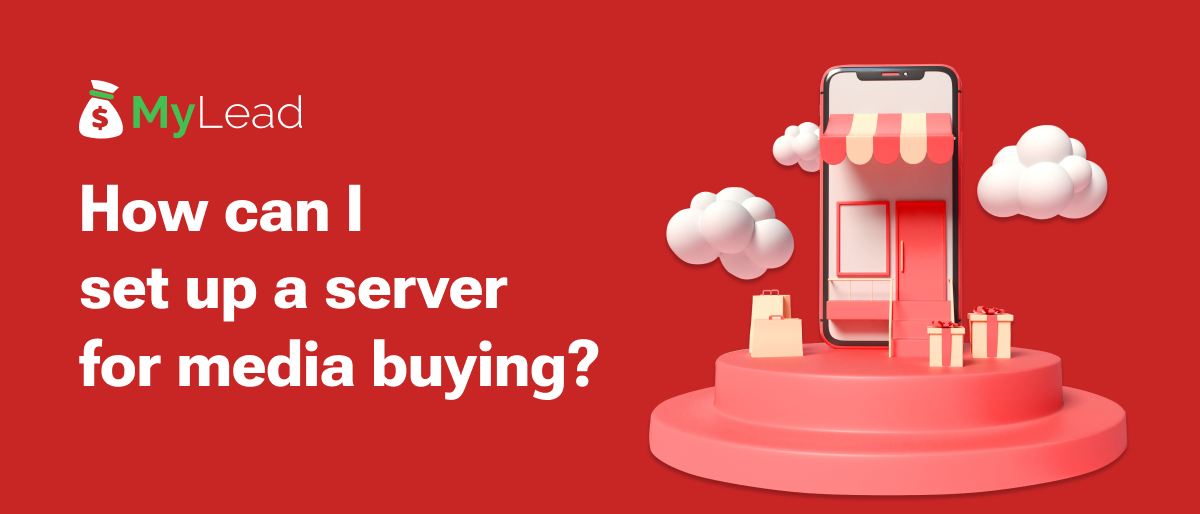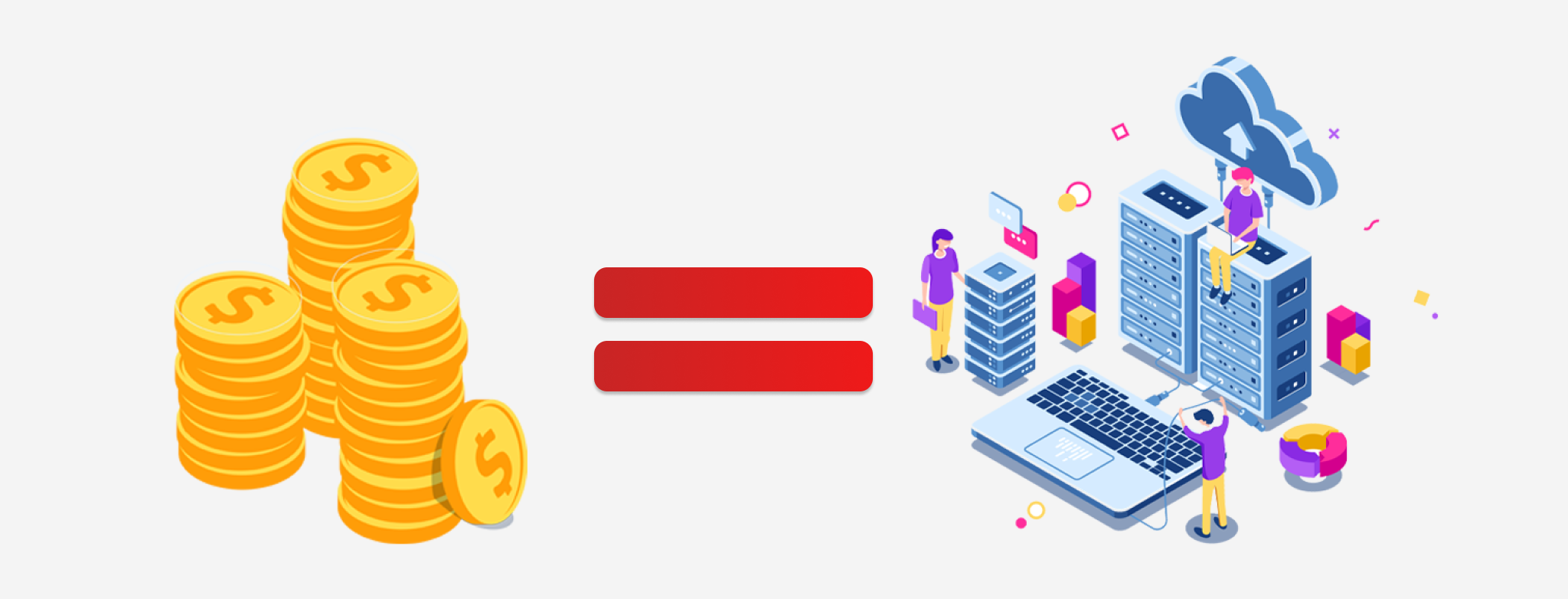
We understand how difficult it is for a new media buyer or affiliate to manage everything - servers, trackers, traffic, offers, targeting, optimization, and so on. We can assist you in a few ways: we will provide you with the greatest offers and the most appropriate targeting. Fortunately, we can educate and develop step-by-step tutorials for media buying and affiliate marketing for any newcomer.
My name is Alex, and I’m a mentor at MyLead. We’ll go over how to set up a server today. Why do you need it? I’m going to tell you everything. Let’s begin!
Why do you need a server?
In this business, there are a few reasons to acquire a server:
- You have complete command over it.
- There are no restrictions on how many landing pages or affiliate sites you can host for your campaigns.
- You can choose the GEO location for the server - if you're running a campaign in Italy or Austria, you won't need a server in the United States; instead, you'll need one in Europe (usually Germany).
- If you are running iPhone sweepstakes offers, you can connect your domain that is related to the campaign, such as takeyouriphone.com.
"But servers are expensive, and it's difficult for a new user to manage them - it takes a lot of knowledge and time," you say. That is incorrect! Servers are not prohibitively costly; You may have a VPS for as little as $6 or $12 per month (about $0.20 or $0.40 per day). I entirely understand the amount of complexity, which is why I will show you how to set up your VPS quickly and easily.

Owning a server for affiliate marketing purposes. What will you need?
Having your own server for affiliate marketing. What exactly will you require?
To begin, you'll need a Digital Ocean or Vultr account, access to the terminal, a free Cloudflare account, and an FTP client. Let's begin at the beginning, and I'll walk you through the entire process!
I'm using a Digital Ocean VPS for this guide, so if you don't already have one, click this link to get a $100 bonus as a special gift for all MyLead publishers!
Log in to your Digital Ocean account and click the "New Project" link in the upper left corner:

Now you can start creating your new project:

Put whatever you want in the "Name" and "Enter description" fields, then select "website or blog" from the dropdown menu and click the green "Create Project" CTA button.
You'll be able to make your first droplet in 1 minute:

Click on “Get Started with a Droplet” CTA button:

Pick a strategy:
The "Basic" Plan, as well as the $12 and $18 alternatives, are suitable for all beginners. If you simply plan to send a few hundred clicks per day, you can start with the $6 package.
Regular Intel droplets with SSDs are less expensive. However, I recommend using the ones with NVMe SSDs.
Scroll down to the menu that says "Choose a datacenter region." Choose Frankfurt or Amsterdam as a campaign location if you wish to run campaigns in Europe. Choose Singapore, for example, if your advertising is centered on Asia.
It's time to continue - scroll down to see the remainder of the options:

When it comes to VPC settings, you can choose to pick some or non of them, as I did, and then go to "Authentication." The "Password" tab should be selected. You must create your password according to Digital Ocean's criteria in the "Create root password" section.
Lifehack: Create a strong password and write it down on paper as a reminder!
If you're finished with password creation, return to the top and get ready to choose your VPS OS:

You can choose between Ubuntu 18.10 and Debian 9.0. Because Ubuntu is based on Debian, there aren't many distinctions between them. Today, I'll be using Ubuntu 18.10 (which I'll explain why I'm using later).
Scroll down to the bottom. The "Finalize and create" part should be reviewed:

Enter a custom hostname or stick with the default, and add some tags if you wish, but it's not required.
Let's keep going. You'll be asked to assign the droplet to a project and whether you want backups enabled:

Please keep in mind that enabling backups will cost you 20% more. Therefore it is up to you whether or not it is worth the extra money.
Simply click the "Create Droplet" CTA when you're ready.
Congratulations! Your first droplet has been produced. If everything is in order, you should see something along these lines:

If you're using macOS or Linux on your desktop or laptop, copy your droplet's IP address and paste it into your terminal. Please download PuTTY from here and follow this guide to connect your Droplet to Windows using the "PuTTY" software if you are using Windows.
I'll just open my terminal because I'm using Linux on my laptop:

Keep in mind that the command "ssh root@your server's IP" is only for UNIX computers, not Windows, although the technique is nearly the same.
You will now be asked to consent to keep the connection open. Then you must provide the password for your server:

If you're using Ubuntu 18.10, you should see something similar to this:

On a new installation, the first thing you should do on a new installation is to update the system. You can do this with only two commands: sudo apt update followed by sudo apt upgrade. It will take 2-4 minutes to complete the process.

It's time to set up a control panel that allows you to add additional domains. It will install Nginx and Apache web servers, as well as an FTP server and a MySQL database server, making your life easier.
I'll be using the Vesta control panel in this tutorial.
VestaCP is limited to Ubuntu 18.10 or earlier, Debian 9 or earlier, and CentOS 7 or earlier (you can see the full list of supported OS here), which is why I'm using Ubuntu 18.10 in this guide.
While still connected to your server, run the following command: curl -O http://vestacp.com/pub/vst-install.sh:

To run it, insert the command: bash vst-install.sh and then click the Enter button:

When the installation asks for your email address, select "y" and input it. With the Enter key, you can skip the rest of the questions (Vesta will use the default settings).
Wait till the procedure is completed:

Remember to write down your Vesta Login login and password someplace!
Now it's time to put our Vesta Panel to the test: go to the control panel's address in your browser. It's https://159.223.105.46:8083 in my case, as shown in the screenshot above, but feel free to use yours.
Your browser will display the following when you first open the control panel:

It's perfectly natural. Select the "Advanced" tab and then agree to continue:

You should be taken to the Vesta Control Panel's login page:

Log in with the default username "admin" and your password. And here's the result:

If you've made it to the Vesta dashboard, congratulations; if not, check your password or try reinstalling the control panel (VestaCP).
Let's get started on the domain setting.
I usually work with Namecheap and will continue to do so. I won't show you how to purchase a domain, but I will demonstrate how to link it to Cloudflare and Vesta Panel.
Log in to Cloudflare after purchasing your domain from Namecheap (if you don't already have an account, please create one, it's completely free) and click the "Add site" button in the middle top:

This menu will appear:

Write the name of your site in the blank field under "enter your site" - no "WWW" or "HTTP" - just the name and the extension (I've hidden my site name for security reasons) - and then click the blue "Add site" CTA button.
After that, you must select a plan. The free plan is sufficient for your affiliate's fundamental requirements:

Select the "Free" option and click "Continue." You will be led to the page "Review your DNA records":

First, erase all existing entries for this domain because you won't need them if you're only going to utilize it to host landing pages. Then click the "Add record" button to view the following menu:

For “Type” leave “A” type, in the “Name” field add “@” and for IPv4 enter your server’s IP in the xxx.xxx.xxx.xxx format and click on the “Save” button!
Repeat the process, but this time add "www" in the "Name" column and save the record:

If everything goes well, you should see something like that:

Let's see what happens next by pressing the “Continue” button.
Prepare to replace your existing nameservers with Cloudflare's.
Log in to your Namecheap dashboard, locate the domain you wish to modify the DNS for, and select "Manage."

You've arrived to the domain settings:

Scroll down to the "Nameservers" section, select "Custom DNS," and copy-paste the name servers from your Cloudflare account (as shown in the screenshot above) (step 2 from the screenshot below). After you've finished, save them and go back to Cloudflare to double-check that the nameservers (step 3 in the screenshot below) are working properly.
You'll find configuration recommendations in the next step, and my advice is to at least look at them:

This is what you'll see after clicking the "View recommendations" button:

I will definitely apply for both. The first will allow a reliable SSL certificate for my site and landing pages, while the second will minify your code, making your landing pages faster. The best part is that they are completely free. Cloudflare, thank you!
That's everything. You'll need to wait 15-30 minutes (often longer) before checking Cloudflare for the newly added domain. If you notice something similar to this:

Well done!
Before we publish our landing page to the server, there's one more thing to do.
Enter your username (admin by default) and password on the Vesta login screen (in case you forgot how just scroll ahead), and log in.
Go to the "WEB" tab and click the blue "+" icon once you've logged in:

The “adding domain” menu will appear:

Enter the name you previously added to Cloudflare in the "Domain" column and the server's IP address in the "IP Address" field. The rest of the settings can be left alone. Click the "Add" button after scrolling down.
The landing page must now be uploaded to the server!
Open your favorite FTP client (I'm using FileZilla, but you can use another) and go to the "Site Manager" or whatever your software calls it, and click "New Site":

Make sure you're utilizing the SFTP protocol when you make a new connection. Enter your server's IP address for the host, leave the port blank because the FTP software will use the default, Logon type - "Normal," user - "root," and password - your server's password (not the VestaCP one!) and then click Connect.
If you completed everything correctly, you should get a message like this:

Now go to /home/admin/web and look for the folder with your domain's name:

Locate the "public html" folder and open it:

There are a few files there; delete the "index.html" and "robots.txt" files.
Create a subfolder in the public html folder for the landing page, which will be uploaded there. I named my subfolder "test," but you may call it anything you want:

It's time to put our work to the test once the uploading is complete.
Open a new browser window and type in the address of your landing page, for example (yourdoman.com/test):

My landing page is up and running, and if you can see it, everything is OK. You are free to create as many landing pages as you like (just remember to keep them in different folders)
If your browser gives you an error message like this:

Select the domain in your Cloudflare account and click the "SSL / TLS" menu on the left:

Change the setting from "full" to "flexible" on the right side of the screen, and your problem should be solved immediately! Retest your landing page; it should now work.
Okay, salespeople. That'll do it for today! Now it's time to work together to make some money. We'll talk again shortly!
Alex
About MyLead:
MyLead is a global, fast-growing affiliate network that has been frequently awarded. Since 2014 it has been successfully connecting advertisers, publishers and customers. The network provides its users with over 3,000 affiliate programs, many in-house tools such as Content Lockers or a link cloaker called HideLink. There’s also a free mentorship program available and many educational materials such as e-books, video tutorials and so on.

























.png)




.gif)
.png)


